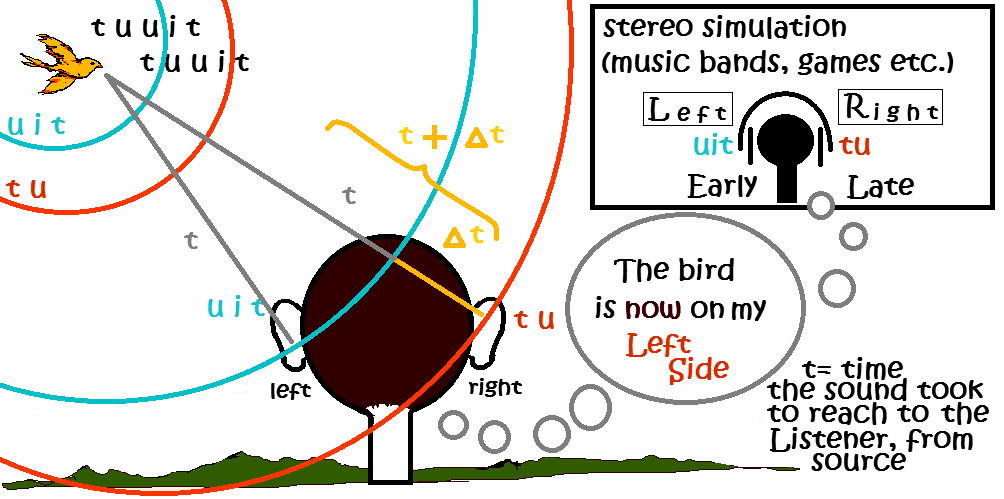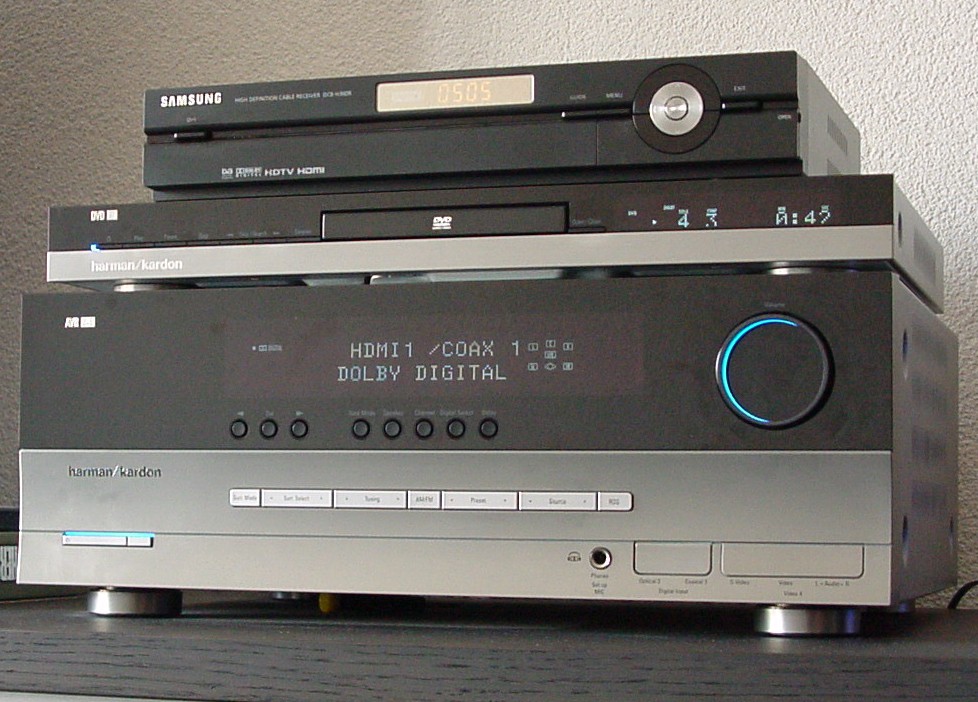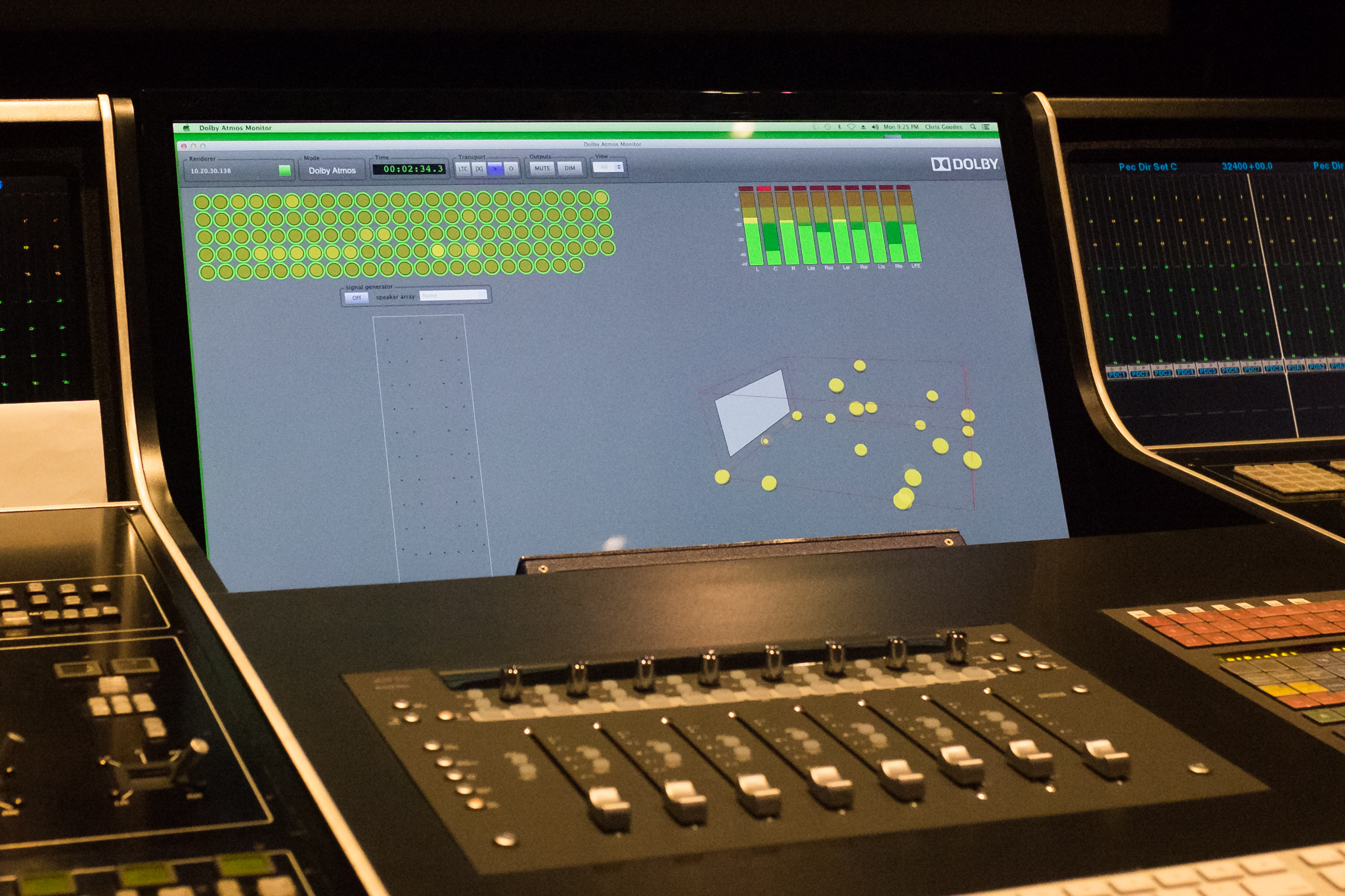|
Dolby TrueHD
Dolby TrueHD is a lossless, multi-channel audio codec developed by Dolby Laboratories for home video, used principally in Blu-ray Disc and compatible hardware. Dolby TrueHD, along with Dolby Digital Plus (E-AC-3) and Dolby AC-4, is one of the intended successors to the Dolby Digital (AC-3) lossy surround format. Dolby TrueHD competes with DTS's DTS-HD Master Audio (DTS-HD MA), another lossless surround sound codec. The Dolby TrueHD specification provides for up to 16 discrete audio channels, each with a sampling rate of up to 192 kHz and sample depth of up to 24 bits. Dolby's compression mechanism for TrueHD is Meridian Lossless Packing (MLP); prior to Dolby TrueHD, MLP was used for the DVD-Audio format, although the two formats' respective implementations of MLP are not mutually compatible. A Dolby TrueHD audio stream varies in bitrate, as does any other losslessly compressed audio format. Like its predecessor, Dolby TrueHD's bitstream carries program metadata, or n ... [...More Info...] [...Related Items...] OR: [Wikipedia] [Google] [Baidu] |
Variable Bitrate
Variable bitrate (VBR) is a term used in telecommunications and computing that relates to the bitrate used in sound or video encoding. As opposed to constant bitrate (CBR), VBR files vary the amount of output data per time segment. VBR allows a higher bitrate (and therefore more storage space) to be allocated to the more complex segments of media files while less space is allocated to less complex segments. The average of these rates can be calculated to produce an average bitrate for the file. MP3, WMA and AAC audio files can optionally be encoded in VBR, while Opus and Vorbis are encoded in VBR by default. Variable bit rate encoding is also commonly used on MPEG-2 video, MPEG-4 Part 2 video ( Xvid, DivX, etc.), MPEG-4 Part 10/H.264 video, Theora, Dirac and other video compression formats. Additionally, variable rate encoding is inherent in lossless compression schemes such as FLAC and Apple Lossless. Advantages and disadvantages of VBR The advantages of VBR are that ... [...More Info...] [...Related Items...] OR: [Wikipedia] [Google] [Baidu] |
Ultra HD Blu-ray
Ultra HD Blu-ray (4K Ultra HD, UHD-BD, or 4K Blu-ray) is a digital optical disc data storage format that is an enhanced variant of Blu-ray. Ultra HD Blu-ray supports 4K UHD (3840 × 2160 pixel resolution) video at frame rates up to 60 progressive frames per second, encoded using High-Efficiency Video Coding. These discs are incompatible with existing standard Blu-ray players. The first Ultra HD Blu-ray Discs were officially released in the United States on February 14, 2016. To differentiate retail Ultra HD Blu-ray releases, the format usually uses a black opaque or largely transparent keep case packaging format (as opposed to blue), but with the same case size as standard Blu-ray. The format is supported on Microsoft's Xbox One X, One S, Series X, and Sony's PlayStation 5. Software made for the PlayStation 5 can use 100 GB UHD Blu-ray discs. History On May 12, 2015, the Blu-ray Disc Association (BDA) revealed completed specifications and the official Ultra HD Blu-ray ... [...More Info...] [...Related Items...] OR: [Wikipedia] [Google] [Baidu] |
Subwoofer
A subwoofer (or sub) is a loudspeaker designed to reproduce low-pitched audio frequencies, known as bass and sub-bass, that are lower in frequency than those which can be (optimally) generated by a woofer. The typical frequency range that is covered by a subwoofer is about for consumer products, below for professional live sound, and below in THX-certified systems. Thus, one or more subwoofers are important for high-quality sound reproduction as they are responsible for the lowest two to three octaves of the ten octaves that are audible. This very low-frequency (VLF) range reproduces the natural fundamental tones of the bass drum, electric bass, double bass, grand piano, contrabassoon, tuba, in addition to thunder, gunshots, explosions, etc. Subwoofers are never used alone, as they are intended to substitute the VLF sounds of "main" loudspeakers that cover the higher frequency bands. VLF and higher-frequency signals are sent separately to the subwoofer(s) and the mains by ... [...More Info...] [...Related Items...] OR: [Wikipedia] [Google] [Baidu] |
Low-frequency Effects
The low-frequency effects (LFE) channel is a band-limited Audio signal, audio track that is used for reproducing deep and intense low-frequency sounds in the 3–120 Hertz, Hz frequency range. This track is normally sent to a subwoofer—a loudspeaker designed to reproduce very low frequencies. LFE channels originated in Dolby Stereo 70 mm film, but in the 1990s and 2000s they became common in home theater systems in order to reproduce film soundtracks found on DVDs and Blu-ray Disc, Blu-ray discs. Types Low-pitched musical arts LFEs include both low-pitched musical notes and low-pitched sound effects. The musical soundtrack for many films includes bass instruments that produce very low notes. Until the 1970s, most of the low-pitched instruments were natural, acoustic instruments, such as the double bass or the pipe organ's pedal keyboard. After the 1980s, film scores increasingly used synthesized instruments, including synthesizer bass, synth bass keyboards, whic ... [...More Info...] [...Related Items...] OR: [Wikipedia] [Google] [Baidu] |
Stereophonic Sound
Stereophonic sound, commonly shortened to stereo, is a method of sound reproduction that recreates a multi-directional, 3-dimensional audible perspective. This is usually achieved by using two independent audio channels through a configuration of two loudspeakers (or stereo headphones) in such a way as to create the impression of sound heard from various directions, as in natural hearing. Because the multi-dimensional perspective is the crucial aspect, the term ''stereophonic'' also applies to systems with more than two channels or speakers such as quadraphonic and surround sound. Binaural recording, Binaural sound systems are also ''stereophonic''. Stereo sound has been in common use since the 1970s in entertainment media such as broadcast radio, recorded music, television, video cameras, cinema, computer audio, and the Internet. Etymology The word ''stereophonic'' derives from the Greek language, Greek (''stereós'', "firm, solid") + (''phōnḗ'', "sound, tone, voice" ... [...More Info...] [...Related Items...] OR: [Wikipedia] [Google] [Baidu] |
AV Receiver
An audio/video receiver (AVR) or a stereo receiver is a consumer electronics component used in a home theater, home audio, or hi-fi system. Its purpose is to receive audio and video signals from a number of sources, and to process them and provide power amplifiers to drive loudspeakers, and/or route the video to displays such as a television, computer monitor, monitor or video projector. Inputs may come from a tuner (radio), TV, FM, or AM tuner, satellite receiver, DVD players, Blu-ray Disc, Blu-ray Disc players, VCRs or video game consoles, among others. The AVR source selection and settings such as volume, are typically set by a remote controller. History A "radio receiver, receiver" in its most basic form is an amplifier, typically at least a two-channel stereo model, that has a built-in radio tuner. Over time, features were integrated that would otherwise require separate pieces of equipment, such as preamplifiers, equalizers, and multiple power amplifiers. As home enterta ... [...More Info...] [...Related Items...] OR: [Wikipedia] [Google] [Baidu] |
Bit Rate
In telecommunications and computing, bit rate (bitrate or as a variable ''R'') is the number of bits that are conveyed or processed per unit of time. The bit rate is expressed in the unit bit per second (symbol: bit/s), often in conjunction with an SI prefix such as kilo (1 kbit/s = 1,000 bit/s), mega (1 Mbit/s = 1,000 kbit/s), giga (1 Gbit/s = 1,000 Mbit/s) or tera (1 Tbit/s = 1,000 Gbit/s). The non-standard abbreviation bps is often used to replace the standard symbol bit/s, so that, for example, 1 Mbps is used to mean one million bits per second. In most computing and digital communication environments, one byte per second (symbol: B/s) corresponds roughly to 8 bit/s. However if stop bits, start bits, and parity bits need to be factored in, a higher number of bits per second will be required to achieve a throughput of the same number of bytes. Prefixes When quantifying large or small bit rates, SI ... [...More Info...] [...Related Items...] OR: [Wikipedia] [Google] [Baidu] |
Audio Channel
An audio signal is a representation of sound, typically using either a changing level of electrical voltage for analog signals or a series of binary numbers for digital signals. Audio signals have frequencies in the audio frequency range of roughly 20 to 20,000 Hz, which corresponds to the lower and upper limits of human hearing. Audio signals may be synthesized directly, or may originate at a transducer such as a microphone, musical instrument pickup, phonograph cartridge, or tape head. Loudspeakers or headphones convert an electrical audio signal back into sound. Digital audio systems represent audio signals in a variety of digital formats.Hodgson, Jay (2010). ''Understanding Records'', p.1. . An audio channel or audio track is an audio signal communications channel in a storage device or mixing console. It is used in operations such as multi-track recording and sound reinforcement. Signal flow Signal flow is the path an audio signal will take from sou ... [...More Info...] [...Related Items...] OR: [Wikipedia] [Google] [Baidu] |
Sound Object
In musique concrete and electronic music theory the term sound object (originally ''l'objet sonore'') is used to refer to a primary unit of sonic material and often specifically refers to recorded sound rather than written music using manuscript or a score. It was coined by Pierre Schaeffer in his publication ''Traité des objets musicaux'' (1966). Definitions Pierre Schaeffer According to Schaeffer: This unit of sound ound-objectis the equivalent to a unit of breath or articulation, a unit of instrumental gesture. The sound object is therefore an acoustic action and intention of listening. Schaeffer believed that the sound object should be free from its sonic origin (its sound source, or source bonding) so that a listener could not identify it, what he termed as acousmatic listening. Schaeffer's four functions of the "What Can be Heard" include: 1. A sonic entity is detected by its signal being picked up by the autonomous mechanism of hearing (ouïr) 2. The signalled sonic ... [...More Info...] [...Related Items...] OR: [Wikipedia] [Google] [Baidu] |
Dolby Atmos
Dolby Atmos is a surround sound technology developed by Dolby Laboratories. It expands on existing surround sound systems by adding height channels as well as free-moving sound objects, interpreted as three-dimensional objects with neither horizontal nor vertical limitations. Following the release of Atmos for the cinema market, a variety of consumer technologies have been released under the Atmos brand. The initial cinema Atmos systems used in-ceiling loudspeaker, speakers, then upward-firing speakers (e.g. for soundbars) were introduced as an alternative for consumer products. Atmos is also used on some devices that do not have a height channel, such as headphones, televisions, mobile phones, and Tablet computer, tablets. History The first Dolby Atmos installation was in the El Capitan Theatre in Los Angeles, for the premiere of Brave (2012 film), ''Brave'' in June 2012. Throughout 2012, it saw a limited release of about 25 installations worldwide, with an increase to more t ... [...More Info...] [...Related Items...] OR: [Wikipedia] [Google] [Baidu] |
Dynamic Range Compression
Dynamic range compression (DRC) or simply compression is an audio signal processing operation that reduces the volume of loud sounds or amplifies quiet sounds, thus reducing or ''compressing'' an audio signal's dynamic range. Compression is commonly used in sound recording and reproduction, broadcasting, sound reinforcement system, live sound reinforcement and some instrument amplifiers. A dedicated electronic hardware unit or audio software that applies compression is called a compressor. In the 2000s, compressors became available as software plugins that run in digital audio workstation software. In recorded and live music, compression parameters may be adjusted to change the way they affect sounds. Compression and limiting are identical in process but different in degree and perceived effect. A limiter is a compressor with a high #Ratio, ratio and, generally, a short #Attack and release, attack time. Compression is used to improve performance and clarity in public address ... [...More Info...] [...Related Items...] OR: [Wikipedia] [Google] [Baidu] |





